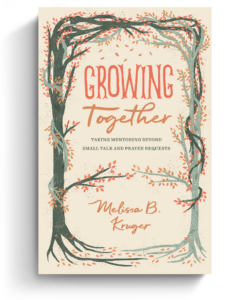They say church planting is like building a plane while you’re flying it. If so, a wise planter will stick to the essentials: Decide if you need a building all week long, or can save money renting space by the hour. Determine which children’s ministries are must-haves, and which are merely nice-to-haves. Budget for administrative help. Choose a target date for beginning to partner in overseas missions.
Wait. What?
Should missions be optional for a new church, or is it essential? If it’s essential—and I’d suggest it is—how can you build missions into your church when it’s just getting off the ground? Let me suggest six ways.
1. Educate globally.
As a church planter, you’re going to teach the Bible. And from cover to cover, you’ll find missions themes. God intends to fill the earth with reflections of his glory in human flesh. Though we’ve failed to fulfill that mission, God cannot fail. In Christ, he consummates his plan to restore and spread his perfect image. Missions is joining in that unfinished work, declaring God’s plan and inviting image-bearers into Christ’s kingdom.
You can’t faithfully preach too many books of the Bible without drawing attention to that theme!
As you teach about missions, you can show your church what God has already done in the world. Tell the story of global Christianity. Tell them what he’s doing now in places like China, Iran, and India. You can explain terms like UPGs (unreached people group) and UUPGs (unengaged unreached people group) so your church learns where laborers are urgently needed and how to pray for them.
2. Partner narrowly.
As you educate your people on global missions, maintain a narrow focus for your church’s labors. You don’t have the resources or time to engage globally. So consider where you have a natural way to engage deeply. Do your members already have relationships with overseas gospel workers? Does your planting church? Are any of your members from a part of the world with UPGs? Are there UUPGs in your community? If so, by learning to evangelize that group you can maximize efficiency and develop skills for international ministry.
Your narrow focus should look like a relationship. Subscribe to your overseas partner’s newsletter. Reply with encouragement. Tell your congregation about requests, then pray for them publicly and regularly. Give your congregation pop quizzes during prayer meetings to test how well you’re communicating. Set goals to visit the work in some way that serves their ministry. And while a relationship involves more than writing a check, it shouldn’t be less.
3. Give prematurely.
Our planting church hired its first church-planting resident when it couldn’t afford to plant. It couldn’t even afford that resident! I suspect churches that wait to plant until they have enough people and money don’t plant many churches. The same goes for international missions. If you wait to support missions financially until your church has enough people and money, I bet you won’t do much for missions.
If you wait to support missions financially until your church has enough people and money, I suspect you won’t do much for missions.
So build international missions into your budget from the beginning. If the initial percentage is less than you wish, discipline yourself to increase incrementally from year to year. When you do, don’t add a second partnership immediately. Give more generously to the narrow focus you already have. If that partner doesn’t need the money today, they will eventually. If you have an end-of-year surplus, consider giving away some or all to your overseas partner.
4. Love liberally.
While you can’t financially or even relationally support everyone you’d like, love as many overseas workers as you can, as well as you can. Show interest in and enthusiasm for their work, and be honest up-front about your inability to offer financial support. This approach has worked well for our church.
In our first few years after planting, we invited several missionaries to share their work with our church even though they were fully funded. One told me that the church where he was baptized had no interest in his work. Missionaries need encouragement just like the rest of us. What seems to you like a simple meal around a table may be to them a heartening gesture.
5. Pray ambitiously.
Building prayer for missions into your services and small groups should be a lay-up. Missionaries send you lists of requests. It costs nothing and requires relatively little time to pray. In fact, you can pray for even more than they have the audacity to ask for.
But praying ambitiously for missions may eventually bear a steep cost. When you pray for the Lord to send laborers into the harvest, God might answer that request by calling your most faithful members.
6. Send painfully.
You knew church planting would be hard. But you believed it’d be worth it. Why? Not because you dreamed of building a personal empire. No, you saw people who needed Jesus in a place that needed a church. You perceived the cost of the work was less than the calamity of Jesus not receiving the worship he deserves. The church you left lost a faithful, gifted worker before they were ready—likely many of them. They felt it. It hurt.
When you pray for the Lord to send laborers into the harvest, God might answer that request by calling your most faithful members.
Sooner or later, God will answer your prayers and send laborers from your work crew—laborers you weren’t ready to lose. Now you get to hurt a little. Now you need to recruit volunteers and train workers, again. But if pain for you means progress for the mission, can you still rejoice? Do you think you’ll look back a millennium from now and feel like you got the raw end of the deal?
Taking Flight
Yes, brand-new churches can do international missions. They must. “The ends of the earth” isn’t just one way to do missions. It’s the ultimate objective.
No, you can’t go everywhere and do it all. You shouldn’t. But you can put these principles into practice, even while your church is barely airborne. They may even accelerate your climb. God does things that way.
Involved in Women’s Ministry? Add This to Your Discipleship Tool Kit.
 We need one another. Yet we don’t always know how to develop deep relationships to help us grow in the Christian life. Younger believers benefit from the guidance and wisdom of more mature saints as their faith deepens. But too often, potential mentors lack clarity and training on how to engage in discipling those they can influence.
We need one another. Yet we don’t always know how to develop deep relationships to help us grow in the Christian life. Younger believers benefit from the guidance and wisdom of more mature saints as their faith deepens. But too often, potential mentors lack clarity and training on how to engage in discipling those they can influence.
Whether you’re longing to find a spiritual mentor or hoping to serve as a guide for someone else, we have a FREE resource to encourage and equip you. In Growing Together: Taking Mentoring Beyond Small Talk and Prayer Requests, Melissa Kruger, TGC’s vice president of discipleship programming, offers encouraging lessons to guide conversations that promote spiritual growth in both the mentee and mentor.































